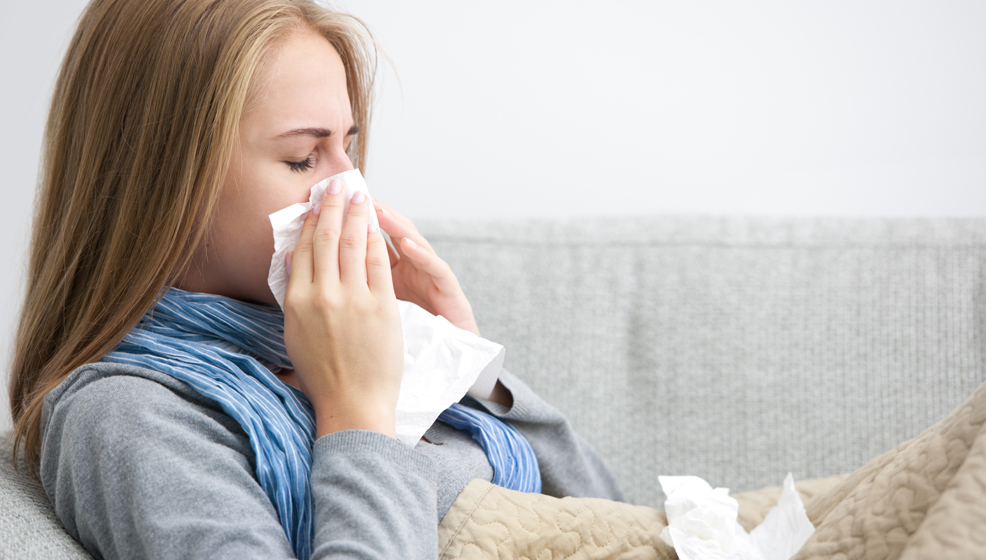The statistics are unsettling. Since 2001, more than 150,000 patients in healthcare settings nationwide have been notified that unsafe injection practices – reuse of needles and syringes or mishandling of medications – may have exposed them to hepatitis and HIV, according to the U.S. Centers for Disease Control (CDC).
At least 50 outbreaks of hepatitis or bacterial infections have been linked to such unsafe practices, 90 percent of them occurring in outpatient settings such as physician offices or ambulatory surgical centers.
In Vermont, there have been no known outbreaks caused by unsafe injection practices, according to Patsy Kelso, Ph.D., state epidemiologist for infectious disease. But that doesn’t mean it couldn’t happen here, she says.
“We haven’t had one of those high-profile outbreaks in Vermont, but these unsafe practices happen all the time across the country,” Kelso says. “They shouldn’t, but they do, on the large scale and on the small scale. Most of the time, it doesn’t happen as a result of malicious intent.”
Instead, “what is more common is somebody without any ill intention thinks they are doing the right thing, making the best use of medication and not wasting medication,” she says. “Maybe they combine what is left in a single-dose vial with another vial without realizing that contaminates the vials. That type of practice is unsafe.”
Outside of Vermont, Outbreaks Linked to Unsafe Injections
In Colorado, babies and toddlers who had received flu shots at a pediatric clinic needed to be tested for HIV. A medical assistant had set aside half-used syringes of adult flu vaccine, mistakenly believing that sterile needles would render the syringes safe, and that half an adult dose could be used for a child.
Elsewhere, a traveling healthcare technician fed his addiction by injecting himself with patients’ pain medication, then refilled the syringes with saline. He gave hepatitis to 46 people, mostly in New Hampshire. Nearly 8,000 people in eight states needed to be tested for exposure. The Mayo Clinic fired a radiology technician in a similar case that killed one patient and risked the lives of many others.
“Traditionally, injection safety has been recognized as a public health issue mainly in low- and middle-income country settings,” the CDC notes. Yet the “U.S. experience with outbreaks attributed to unsafe injection practices has grown substantially over recent years.”
A Reminder: One Needle, One Syringe, One Time
To promote safe practices, Vermont has teamed with the CDC on its One & Only Campaign. Most simply, as the campaign’s posters point out, that translates to “one needle, one syringe, only one time.” The campaign is supported by a coalition of healthcare-related organizations, patient advocacy organizations, industry partners and other public health partners. The Government Accountability Office also has published a report on the issue.
Despite the strong safety record in Vermont, the state Department of Health continues to spread the word about safe injection practices, Kelso says. The CDC’s One & Only Campaign reminds healthcare professionals:
- Never administer medications from the same syringe to more than one patient, even if the needle is changed.
- After a syringe or needle has been used to enter or connect to a patient’s IV, it is contaminated and should not be used on another patient or to enter a medication vial.
- Never enter a vial with a used syringe or needle.
- Never use medications packaged as single-dose vials for more than one patient.
- Assign medications packaged as multi-dose vials to a single patient whenever possible.
- Do not use bags or bottles of intravenous solution as a common source of supply for more than one patient.
- Follow proper infection control practices during the preparation and administration of injected medications.
Safe Injection Practices at The University of Vermont Medical Center
The state’s largest hospital, The University of Vermont Medical Center, takes proactive steps to ensure safe injections throughout its inpatient and outpatient locations, according to Sally M. Hess, C.I.C., M.P.H.,manager of the medical center’s Infection Prevention Department.
The UVM Medical Center has been recognized nationally for infection prevention overall, receiving the 2014 Partnership in Prevention Award for achieving sustainable improvements in eliminating healthcare-associated infections. It is the only healthcare organization in the nation to receive the award from the U.S. Department of Health and Human Services, the Association for Professionals in Infection Control and Epidemiology, and the Society for Healthcare Epidemiology of America.
The award recognizes the medical center’s use of multidisciplinary teams to target central line-associated bloodstream infections, surgical site infections and other healthcare-associated infections in multiple patient populations resulting in excellent patient outcomes.
When it comes to ensuring safe injections, Hess says, the medical center has three major stopgaps to prevent misuse and abuse:
The hospital’s pharmacy oversees all medication administration and monitors for any improper use of medical vials.
The Infection Prevention Department has trained more than 200 infection prevention advocates across the organization on use of evidence-based practices to prevent infections, including monitoring of medication administration and safe injection practices.
Annual safety rounds survey the environment of care in all medical center patient care sites. Each site receives a score and any suggestions for improvement. “One of the elements on which they are scored is appropriate use and handling of medication and medical vials,” Hess says.





